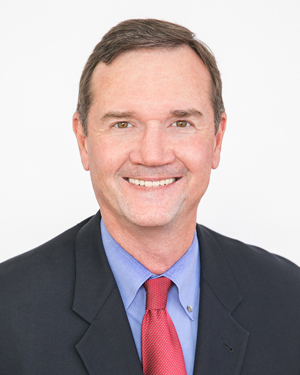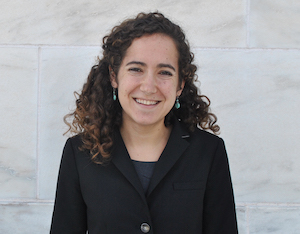The Environmental Quality Incentives Program (EQIP) will soon emerge more fully equipped, so to say, for a broader spectrum of farm conservation assistance as USDA implements 2018 farm bill program changes in the year ahead.
EQIP, already a mammoth program farmers employ to bolster land and water conservation practices, has been doling out cost-share dollars and technical assistance for specific, short-term and narrowly focused projects and practices for over 20 years. It lies within USDA's broad conservation-promoting scheme for “working lands” (actively farmed and ranched) and is complemented by the Conservation Stewardship Program (CSP), which helps farmers plan and implement conservation practices long-term and across their entire farms.
EQIP and CSP have been funded at about the same level in recent years ($1.4 billion for each last year), but the farm bill shifts spending steadily toward EQIP in years ahead — to over $2 billion in 2023 — while also directing it to cover more of USDA’s conservation promotion efforts. Yearly CSP spending will slide to about $1 billion.
The farm bill's changes are intended to encourage farmers to adopt practices that are hard to maintain, says Don Parrish, American Farm Bureau Federation’s regulatory relations director. EQIP’s new expanded role is “an important shift into getting farmers to do things that really ... cost farmers to implement and (for which they) may not get a return on” without some USDA dollars, he says.

Don Parrish, AFBF
Some details of the program won't be known until the Natural Resources Conservation Service completes at least interim regulations. USDA gathered oral and written views from 183 organizations and individuals on how to implement farm bill conservation and other programs.
Look for new EQIP provisions to be phased in through fiscal year 2020. NRCS Administrator Matt Lohr recently suggested most of the agency's programs will continue under existing rules this year as much as possible, "so that farmers won’t see a gap in service.” For EQIP, an agency spokesman told Agri-Pulse. "NRCS will be vetting many of the new opportunities through the rulemaking process for implementation in fiscal year 2020."
Freshened EQIP perks
But the farm bill spelled out most of the changes. For starters, it boosted incentives to participants:
- Farmers will be eligible for reimbursement of 90 percent of the costs associated with planning, design, materials, equipment, installation, labor, management, maintenance, or training conservation practices, if they are among up to 10 that each state can designate as priorities in correcting surface or groundwater impairments. Under the 2014 farm bill, beginning or socially disadvantaged farmers and ranchers and veterans could get 90 percent of their costs covered; other producers were limited to no more than 75 percent.
- The per-farm limit for total payments to organic farmers in the EQIP organic initiative will jump to $140,000 for the five years through 2023 (up from the previous $80,000 across any six years).
- NRCS must advise all participants who are beginning or socially disadvantaged farmers and ranchers or veterans that they can collect 50 percent of their cost share up front rather than after the practices are implemented.
A new, optional long-term EQIP contract
NCRS will offer 5- to 10-year EQIP “incentive contracts” in watersheds “or other appropriate regions” that are designated as “priority resource concerns” and where landowners want to address at least one of those selected resource problems. Payments will be made for both establishing conservation practices and maintaining them.
The farm bill directs USDA to prioritize applications that address such practices as water conservation scheduling, soil moisture monitoring, irrigation-related measures that conserve surface water or groundwater, and transitioning to water-conserving crops and crop rotations.
In comments to USDA, the National Association of Conservation Districts said the incentive contracts would “allow producers to implement a suite of practices by offering annual payments rather than cost share without having to meet the more rigorous eligibility standards required" by the Conservation Stewardship Program.
Ben Mosely, USA Rice vice president for government affairs, said the incentive contracts make EQIP a ‘simplified CSP’ (for) either farmers who don’t want to put their whole farm in or are only interested in a narrow band of practices, or even more importantly, aren’t advanced in their stewardship yet.”
EQIP and CSP: separate roles
Alyssa Charney, senior policy specialist for the National Sustainable Agriculture Coalition, emphasizes that CSP enrollees plan and implement whole-farm conservation and apply many practices, while, up to now, EQIP enrollees commit to implement or improve one practice. So she says it’s important that USDA “equally promote and encourage participation in both EQIP and CSP.”

Alyssa Charney, NSAC
In any case, five- to 10-year EQIP contracts will have a clear upside, because farmers, when getting the long-term EQIP help in installing and maintaining one or more practices, will be in a better position to maintain the higher level of conservation going forward, say Charney and AFBF’s Parrish. Thus, the contracts may be a bridge to CSP and its long-term benefits.
To help EQIP participants find a ready transition to CSP, NSAC suggests USDA select incentive contracts that “target management practices that will require management and maintenance over the course of the five- to 10-year contract.”
The farm bill, in fact, gives USDA a directive to “provide for streamlined and coordinated procedures” to make CSP and EQIP work well together, “including applications, contracting, conservation planning, conservation practices, and related administrative procedures.”
Longer, broader contracts
While the new incentive contracts — and many regular EQIP projects — will become longer, the program will cover more ground as well.
- The definition of a “practice” qualified for EQIP support was expanded, to include soil tests and soil remediation practices, for example, and the list of eligible conservation planning activities now includes those for resource-conserving crop rotations and precision conservation practices.
- The list of entities eligible for EQIP funds was expanded as well. It now includes states, irrigation districts, groundwater management districts, “or similar,” the farm bill says, “to implement water conservation or irrigation practices under a watershed-wide project that will effectively conserve water, provide fish and wildlife habitat, or provide for drought-related environmental mitigation.”
While giving such entities access to the EQIP purse will result in clean water and wildlife habitat benefits, some farm and environmental advocates note that for the water and irrigation entities, the farm bill waives the per-project cap of $450,000 imposed for individual participants, and they want USDA to install sideboards on EQIP cash for those entities.
National Farmers Union suggests, for example, that USDA apply the same cap of $10 million per project that already applies to the Regional Conservation Partnership Program.
EQIP dollars are “just critically important, and we have a ton of folks out West who are dealing with water shortages,” says Matt Perdue, NFU government relations director. “We really want to make sure that these new irrigation payments ... (are) available, but we also do not want (the waiver) to impact the availability of funding for farmers and ranchers.” A reasonable ceiling on the dollars to irrigation districts will be critical, he says, “particularly in certain states where you’re going to see a lot of applications for this irrigation efficiency funding.”
Charney, meanwhile, points out that the farm bill did install some sideboards by prohibiting any changes in USDA’s state-by-state allocation of EQIP dollars. “We don’t want to see the amount of money (increasing) to states that have a higher demand for this type of project,” she says. Such limits are needed so EQIP money is used “to achieve goals of water use efficiency, not to expand irrigation” to land not now irrigated, she says.
EQIP gives wildlife habitat 10 percent, plus 10 years
The farm bill doubles to 10 percent the minimum share of EQIP funds devoted to projects primarily enhancing wildlife. Among the EQIP provisions, “we’re most excited about the 10 percent going toward wildlife,” said Kellis Moss of Ducks Unlimited.
Perhaps even more significant, however, is lawmakers’ push for a 10-year term for all new EQIP contracts enhancing or maintaining wildlife, as opposed to the typical one to three years of funding in past years.
Besides the act’s 10-year authorization itself, the farm bill authors’ statement on EQIP accompanying the bill declared: “Conservation practices adopted solely for the benefit of wildlife should be fostered with contracts of the maximum length allowed by law. Wildlife practices often diminish agronomic value on working agricultural lands (and) … are therefore highly unlikely to be sustained by farmers without longer-term, incentives-based partnerships with NRCS. (Thus) … contracts for the benefit of wildlife should not be … less than 10 years.”
The farm bill also specifically authorized EQIP funding for two types of water management practices for waterfowl habitat: to carry out post-harvest flooding, and “to maintain the hydrology (flooding) of temporary and seasonal wetlands of not more than two acres to maintain waterfowl and migratory bird habitat on working cropland.’’
The Prairie Pothole region that is dotted with wetlands in the upper Midwest and rice-growing areas, where fields are flooded after harvest, will both benefit, said Moss.
Rice growers welcomed EQIP payments for post-harvest flooding. “The wildlife species benefiting from these practices need sustained, longer-term investments to rebound and thrive,” said Mosely of USA Rice. “Congress’s intent is clear and USA Rice expects to see 10-year contracts,” he said.
For more news, go to www.Agri-Pulse.com


